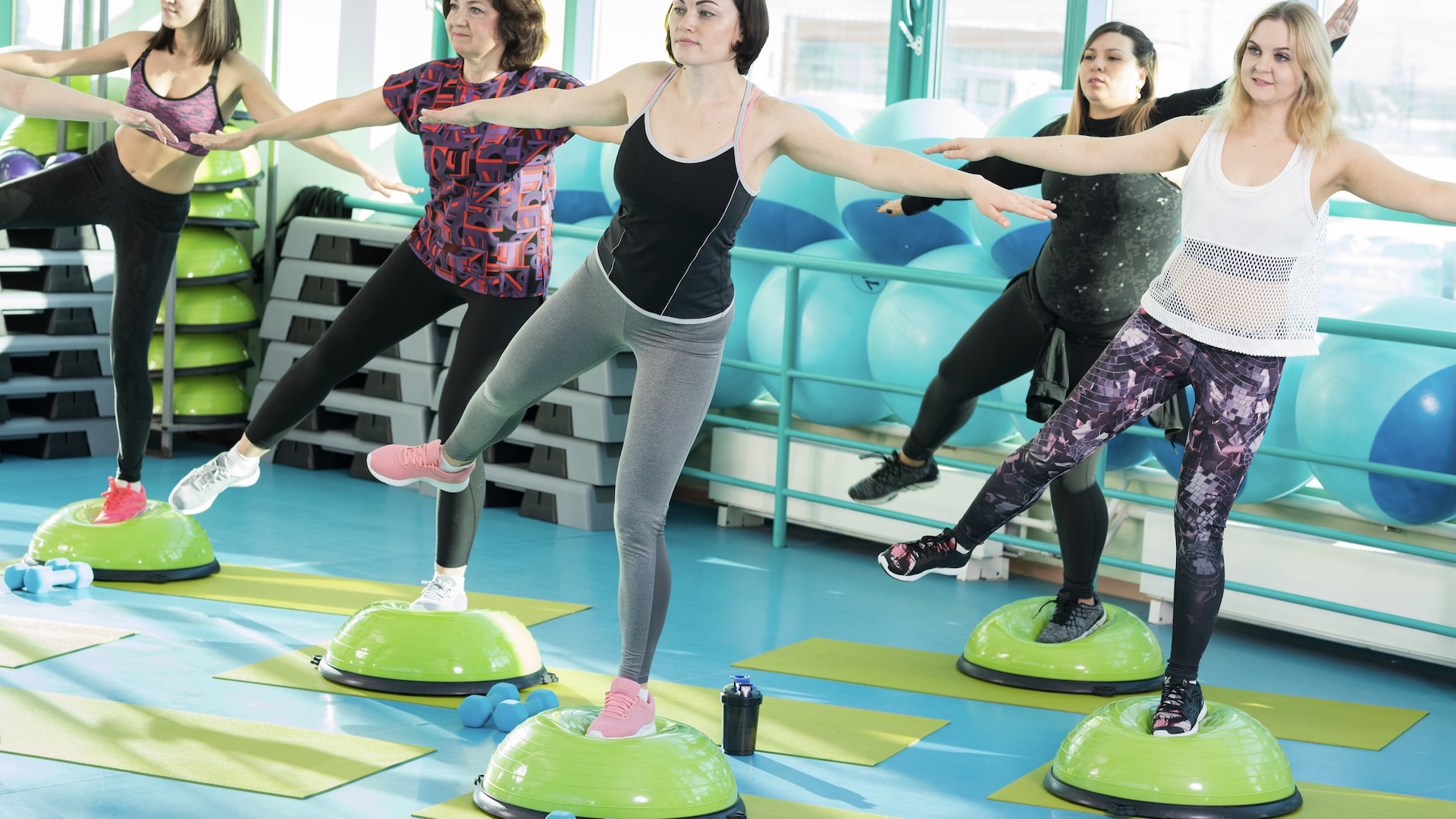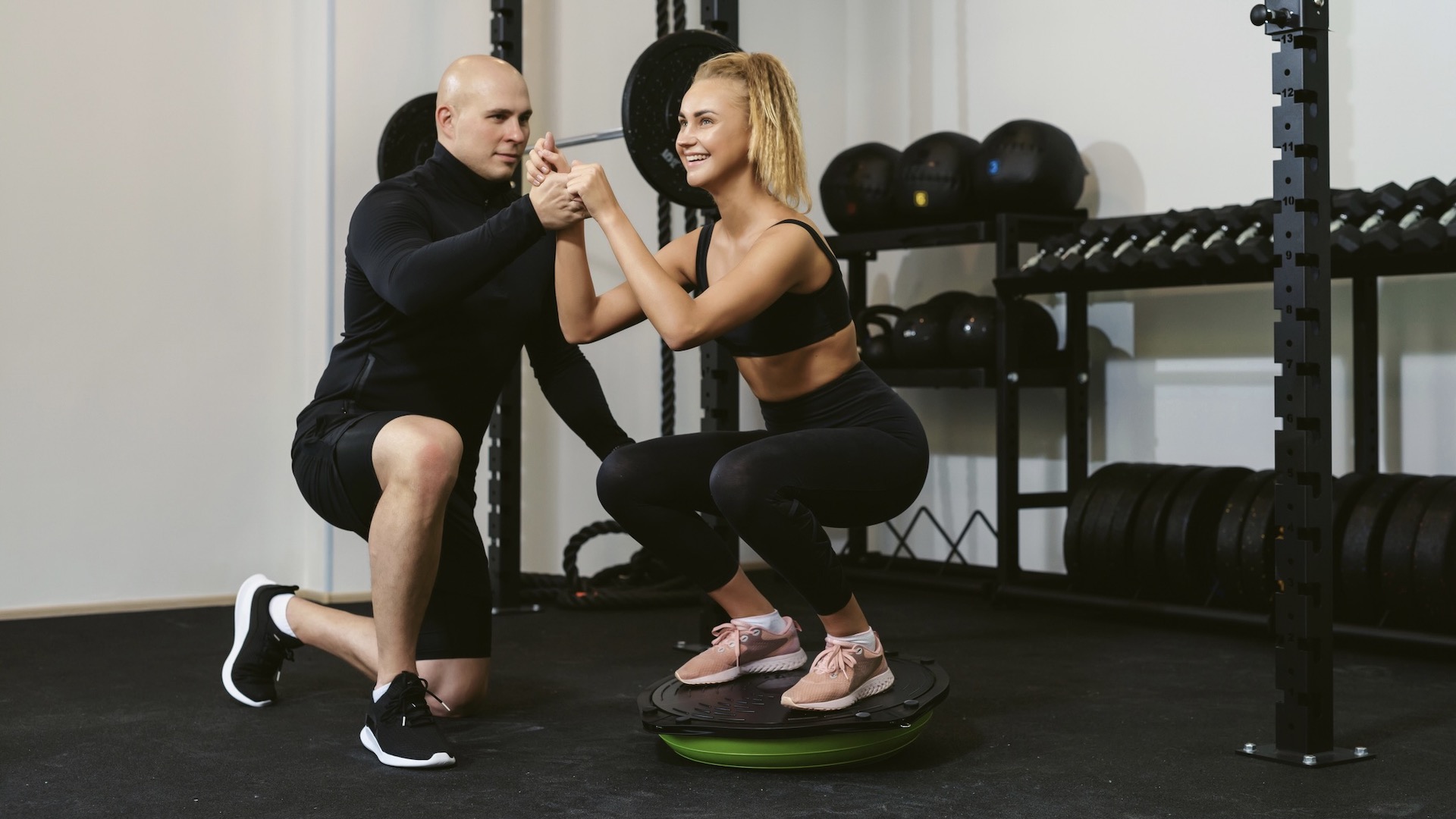The 5 best wobble board exercises for runners – and how to do them
This simple but effective fitness gadget could become your best friend if you want to become a better runner

We’ve all seen them, whether at the gym or in the corner of a friend’s dining room or lounge, but what exactly is a wobble board and how can it be helpful for runners?
Well, let’s think about what runners need for improved performance and to avoid injury. Strength, balance and consistent miles, plus a good dose of rest and recovery, are all part of a good quality running program.
The wobble board is a runner’s friend when it comes to strength and conditioning. The fitness gadget is also fun to use, but be warned, it’s also hard work. It's also a good addition to body weight exercises.

What’s a wobble board – and what’s it good for?
A wobble board is also called a balance board. A BOSU ball can be classed as a wobble board, too. Basically, it’s a fitness device that injects a major element of balance into anything from standing still, to standing on one leg, to doing planks and press-ups.
The 'wobble' part of the board is usually created by a rounded bottom. This could be half a ball of hard material underneath a flat platform, or an inflated hemisphere in the case of a BOSU ball. To use a BOSU ball, either stand on the inflated side, or turn it over so the inflated sphere is underneath.
The hemispherical shape or curve makes the flat platform unstable. This makes a wobble board great for improving balance and stability, as well as for strengthening leg and core muscles, plus ligaments and tendons.

5 great wobble board exercises for runners
Follow these wobble board exercises to improve strength and balance for running.
Advnture Newsletter
All the latest inspiration, tips and guides to help you plan your next Advnture!
The simple wobble
Stand on the platform of the wobble board with your legs hip-width apart. Now wobble the board backwards and forwards by engaging the muscles of your feet and legs. You will need to engage your core muscles as well to stay balanced.
This is a great exercise for strengthening and stabilizing plantarflexion – the movement of the foot in a downward motion away from the body – and dorsiflexion – the backward bending and contracting of your foot.
If you are new to the wobble board, it’s a good idea to have something at your side, such as the back of a chair, to support you.
To do this exercise, make sure your weight in the middle of the board. Rock forward so that the edge of the board touches the floor, or as close as you can get without falling off. Try to keep your legs straight and stand tall. The rock backwards is as far as you can go.
Start with eight to 10 rocks and build up.
Side to side wobble
This is a similar exercise, but it focuses on stabilizing the feet so as to prevent them rotating inward and outward. Start the exercise the same way as for the simple wobble, then rock the board to one side and then the other.
Repeat eight to 10 times, and build up as you become stronger and more stable on the board.
Circle wobble
By performing a continuous circle on the wobble board you will build on the strength and stability gained from the first two exercises.
To perform a circle, you will be doing exactly what it says. First, rock forwards to touch the edge of the board on the floor and then and proceed to rock in a circle, think about trying to touch each number on a clock face, until you complete the circle.
The stronger and more balanced you become, the more 'numbers' you’ll be able to touch with the edge of the wobble board. Repeat the circle in both directions several times.

Single leg balance
Once you feel confident on a wobble board, you can try to stand on one leg. Stand with one foot on the centre of the wobble board. Try to balance. You might need the assistance of something to rest your hand on to begin with.
Balance for as long as you can. Then swap legs.
Wobble squats
Try doing a regular squat on a wobble board and then, to progress it, introduce hand-held weights. The additional need to stabilise yourself as you perform the squat will bring benefits of strength and balance.
Using a wobble board, or a balance board, a few times a week will help with strength, balance and stabilization, which are all important if you want to perform at your best as a runner.
- Best trail running shoes: for agility and speed on technical terrain

Fiona Russell is a widely published adventure journalist and blogger, better known as Fiona Outdoors. She is based in Scotland and is an all-round outdoors enthusiast with favorite activities including trail running, mountain walking, mountain biking, road cycling, triathlon and skiing (both downhill and backcountry). Aside from her own adventures, Fiona's biggest aim is to inspire others to enjoy getting outside and exploring, especially through her writing. She is also rarely seen without a running skort! Find out more at Fiona Outdoors.
